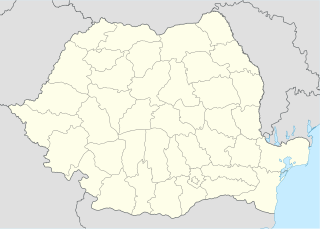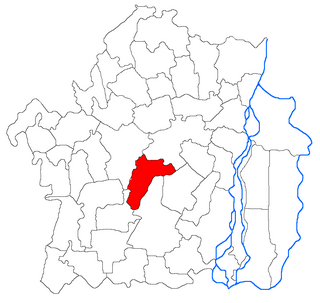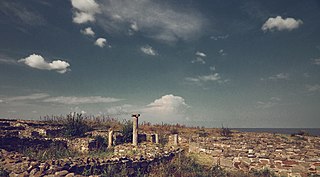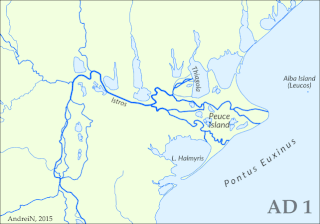 W
WAcidava (Acidaua) was a Dacian and later Roman fortress on the Olt river near the lower Danube. The settlements remains are located in today's Enoşeşti, Olt County, Oltenia, Romania.
 W
WAda Kaleh was a small island on the Danube in what is modern Romania, populated mostly by Turks of Romania, that was submerged during the construction of the Iron Gates hydroelectric plant in 1970. The island was about 3 km downstream from Orșova and was less than two kilometers long and approximately half a kilometer wide.
 W
WAizis was a Dacian town mentioned by Emperor Trajan in his work Dacica. Located at Dealul Ruieni, Fârliug, Caraș-Severin, Banat, Romania.
 W
WApulon was a Dacian fortress city close to modern Alba Iulia, Romania from where the Latin name of Apulum is derived. The exact location is believed by many archaeologists to be the Dacian fortifications on top of Piatra Craivii, Craiva, Cricău, about 20 km north of Alba-Iulia.
 W
WBordei Verde is a commune located in Brăila County, Muntenia, Romania. It is composed of three villages: Bordei Verde, Constantin Gabrielescu and Lișcoteanca. The nearest town is Ianca.
 W
WHistria or Istros, was a Greek colony or polis near the mouths of the Danube, on the western coast of the Black Sea. Histria is derived from the Latin word "Hister", meaning "Danube", the river the city was located near, and "-ia", a suffix added to a word to signify that it was a location or place, as in Gallia or Iberia. Altogether Histria means "On the Danube", "Located near - The Danube". It was the first urban settlement on Romanian territory when founded by Milesian settlers in the 7th century BC. It was under Roman rule from the 1st to 3rd centuries AD. Invasions during the 7th century AD rendered it indefensible, and the city was abandoned. In antiquity, it also bore the names Istropolis, Istriopolis, and Histriopolis.
 W
WLibida or Ibida was an ancient settlement in Scythia Minor, today's Dobruja region of modern Romania. It is within the commune of Slava Cercheză, in the village of Slava Rusă. The settlement existed in Getic times. Its growing importance as a centre of commerce led to the construction of the fortified town during the reign of the Tetrarchy and Constantine the Great.
 W
WThe Basarabi-Murfatlar Cave Complex is a medieval Christian monastery located near the town of Murfatlar, Constanța County, Northern Dobruja, Romania. The complex is a relict from a widespread monastic phenomenon in 10th century Bulgaria.
 W
WMărașu is a commune located in Brăila County, Muntenia, Romania. It is composed of five villages: Băndoiu, Măgureni, Mărașu, Plopi and Țăcău. It formerly included Nedelcu village, now depopulated.
 W
WIn ancient geography, Peuce is a former island in the Danube Delta, in Scythia Minor. It was about the size of the island of Rhodes.
 W
WThe study of the settlements of the Cucuteni-Trypillia culture provides important insights into the early history of Europe. The Cucuteni-Trypillia culture, which existed in the present-day southeastern European nations of Moldova, Romania, and Ukraine during the Neolithic Age and Copper Age, from approximately 5500 to 2750 BC, left behind thousands of settlement ruins containing a wealth of archaeological artifacts attesting to their cultural and technological characteristics. Refer to the main article for a general description of this culture; this article deals with its settlements.
 W
WColonia Ulpia Traiana Augusta Dacica Sarmizegetusa was the capital and the largest city of Roman Dacia, later named Ulpia Traiana Sarmizegetusa after the former Dacian capital, located some 40 km away. Built on the ground of a camp of the Fifth Macedonian Legion, the city was settled by veterans of the Dacian wars. From the very beginning it received the title of colonia and the status of ius Italicum. With an area of 30 hectares, a population between 20,000 and 25,000, and strong fortifications, Ulpia Traiana was the political, administrative and religious centre of Roman Dacia in the 2nd and 3rd centuries.